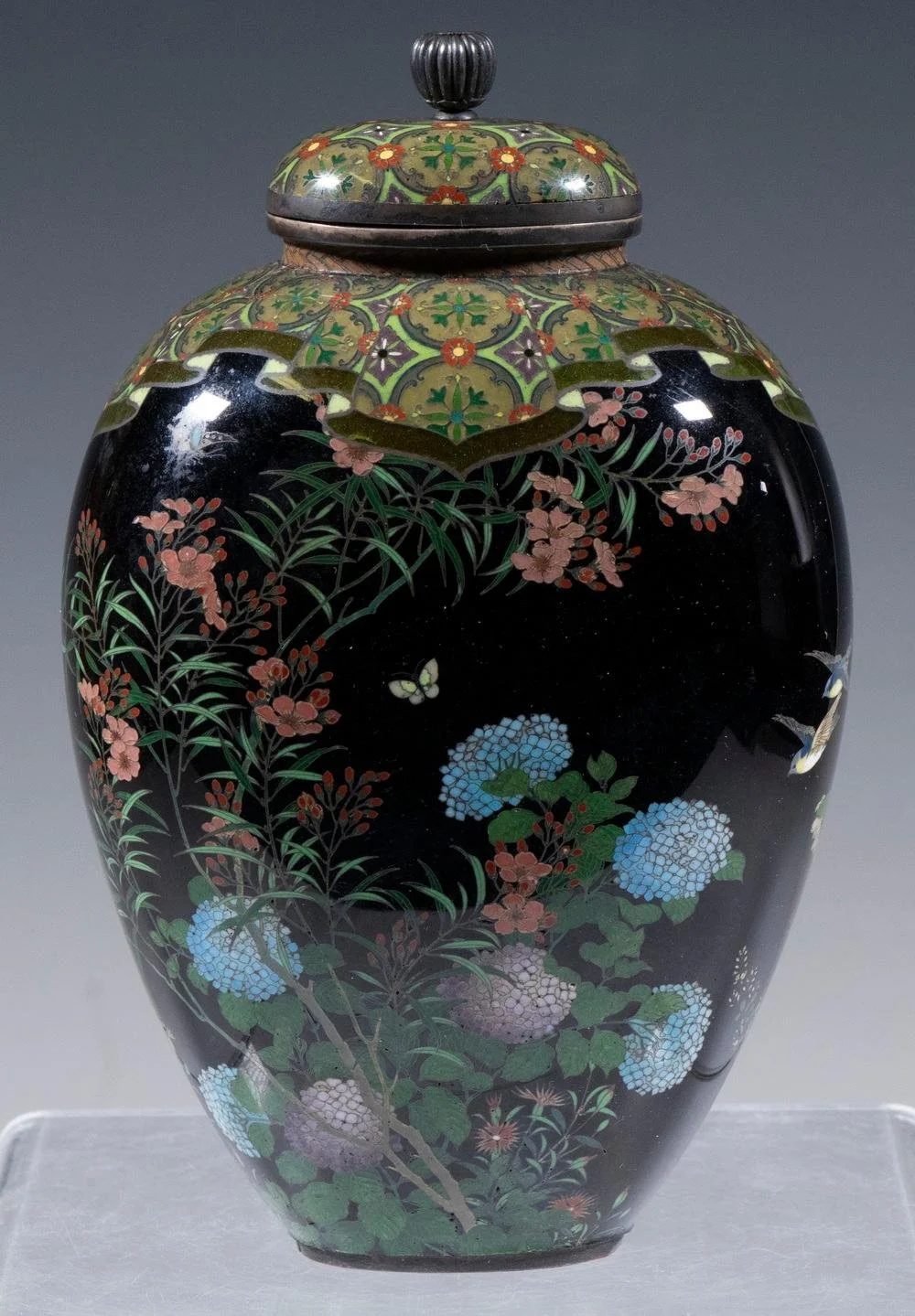Want to Own a Piece of History? Look at This 19th Century Cloisonné!
Crafting Cloisonné is an art that takes time and careful attention to detail, and was mastered by Japanese designers in the mid-19th century. Cloisonné is the technique of creating designs on metal vessels with colored-glass paste placed within enclosures made of copper or bronze wires, which have been bent or hammered into the desired pattern.
In this video, expert appraiser Kaja Veilleux discusses in detail the quality of work involved when crafting Cloisonné by Japanese producers during the Meiji period, and how some were more carefully crafted than others. These three prime and exquisite examples of Japanese Cloisonné on offer are quite small, yet each were meticulously crafted using different methods. Some include silver wire to create a unique design within the structure of the piece, and others include guilloche enamel with an outstanding finish.
Watch the video to learn more!
Lot # 1133:
Silver Mounted Lidded Jar
Meiji Period Silver Wire Cloisonne Enamel High Shouldered Jar, 19th Century, with silver mounts, the flat body with finely executed floral, bird and butterfly decoration on a black field, the lid with a chrysanthemum form finial, unsigned, 6" high, 3 3/4" x 2 1/2".
Some Cloisonné pieces can range from several thousand dollars, while others that were lesser quality were sold to tourists visiting Japan for much less. Cloisonné of this imperial quality can be extremely hard to find, and we have a variety of exquisite pieces of offer during our Japanese Art and Antiques Auction hosted on May 2nd, 2025 at Thomaston Place Auction Galleries.
For assistance with bidding and registration, please telephone: +1 (207) 354-8141
Register to bid online at live.thomastonauction.com
For all other enquiries please contact us.

